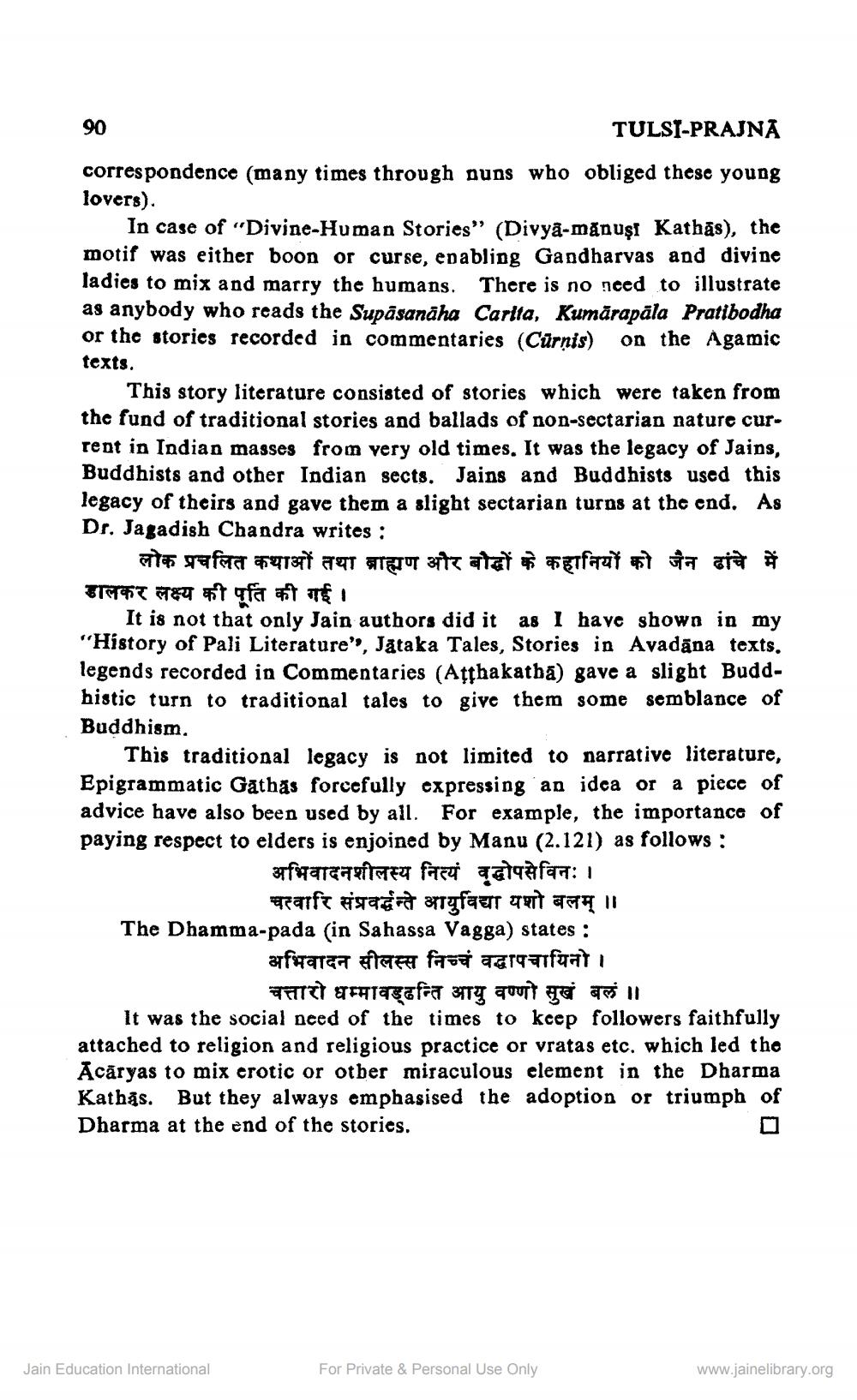________________
90
TULSI-PRAJNA correspondence (many times through nuns who obliged these young lovers).
In case of "Divine-Human Stories" (Divya-mănuşi Kathās), the motif was either boon or curse, enabling Gandharvas and divine ladies to mix and marry the humans. There is no need to illustrate as anybody who reads the Supāsanāha Carlta, Kumārapäla Pratibodha or the stories recorded in commentaries (Cūrņis) on the Agamic texts.
This story literature consisted of stories which were taken from the fund of traditional stories and ballads of non-sectarian nature cur. rent in Indian masses from very old times. It was the legacy of Jains, Buddhists and other Indian sects. Jains and Buddhists used this legacy of theirs and gave them a slight sectarian turns at the end. As Dr. Jagadish Chandra writes :
लोक प्रचलित कथाओं तथा ब्राह्मण और बौद्धों के कहानियों को जैन ढांचे में डालकर लक्ष्य की पूर्ति की गई।
It is not that only Jain authors did it as I have shown in my "History of Pali Literature'', Jataka Tales, Stories in Avadāna texts. legends recorded in Commentaries (Atthakatba) gave a slight Buddhistic turn to traditional tales to give them some semblance of Buddhism.
This traditional legacy is not limited to narrative literature, Epigrammatic Gathas forcefully expressing an idea or a piece of advice have also been used by all. For example, the importance of paying respect to elders is enjoined by Manu (2.121) as follows:
अभिवादनशीलस्य नित्यं वृद्धोपसेविनः ।
चत्वारि संप्रवर्द्धन्ते आयुर्विद्या यशो बलम् ॥ The Dhamma-pada (in Sahassa Vagga) states :
अभिवादन सीलस्स निच्चं वद्धापचायिनो।
चत्तारो धम्मावड्ढन्ति आयु वण्णो सुखं बलं ॥ It was the social need of the times to keep followers faithfully attached to religion and religious practice or vratas etc. which led the Acāryas to mix erotic or otber miraculous element in the Dharma Kathas. But they always emphasised the adoption or triumph of Dharma at the end of the stories.
Jain Education International
For Private & Personal Use Only
www.jainelibrary.org




